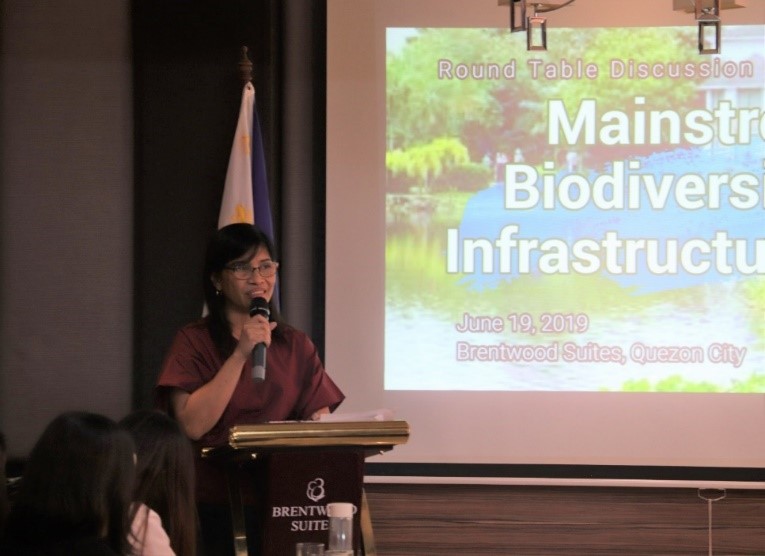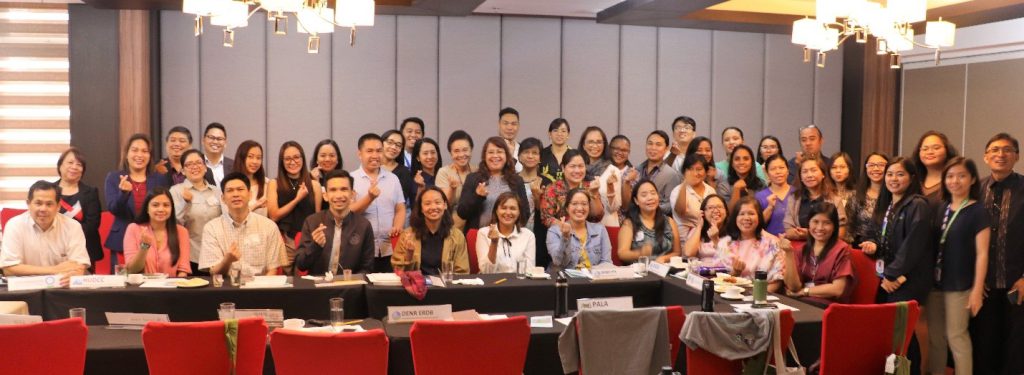
In a 2018 The Guardian interview, Dr. Cristiana Pasca Palmer, Executive Secretary of the United Nations Convention on Biological Diversity (UNCBD), said that biodiversity is the ‘infrastructure’ that supports all life on the planet. Dr. Palmer shares that, “Whenever we lose species through extinction, the web of life is destroyed and this affects the resilience of ecosystems and nature’s capacity to provide the services that humans benefit from – ensuring our food, the air we breath, the water we drink, or the moments of peace and serenity we enjoy in nature.”
Dr. Palmer also stressed the need to understand that our planet is one system of interconnected elements, and more importantly, people should start to realize that our “social and economic systems are embedded in the larger nature’s system, and not the other way around.”
Biodiversity cuts across our social and economic systems. Biodiversity affects these systems and in turn, our social and economic systems also affect our biodiversity – positively or negatively. The importance of biodiversity and the need for its conservation and inclusion into development operations and decisions can not be over-emphasized. Following Strategic Goal A (i.e. mainstream biodiversity across government and society) of the Aichi Biodiversity Targets, the Biodiversity Management Bureau (BMB) has initiated a series of roundtable discussions (RTD) on mainstreaming biodiversity into the different sectors of society since last year. The first RTD, held in June 2018, focused on mainstreaming biodiversity in urban areas. The second RTD, which was held in March 2019, centered on mainstreaming biodiversity in the health sector.
On 19 June 2019, the BMB held the Roundtable Discussion on Mainstreaming Biodiversity in the Infrastructure Sector at the Brentwood Suites in Quezon City. Spearheaded by the Biodiversity Policy and Knowledge Management Division (BPKMD), the RTD was participated by representatives from the following national government agencies and partner organizations, namely: DPWH, DILG, DTI, DENR, NEDA, NHA, MMDA, HLURB, HUDCC, Philippine Reclamation Authority (PRA), ICLEI Southeast Asia, Climate Change Commission (CCC), Public-Private Partnership Center (PPP), Alliance for Safe, Sustainable, and Resilient Environments, Inc. (ASSURE), Philippine Green Building Council (PHILGBC), Philippine Institute of Environmental Planners (PIEP), Philippine Association of Landscape Architects (PALA), Forest Foundation Philippines (FFP), Conservation International – Philippines (CI), and Biodiversity Finance Initiative (BIOFIN).
The RTD started with an opening remark from BMB OIC Assistant Director Armida P. Andres. In her message, AD Andres emphasized to the participants the need to recognize the importance of biodiversity in each of their offices’ mandates and look at how we can integrate biodiversity conservation and protection into existing structures and systems.
AD Andres informed the participants of the RTD’s objectives: to familiarize everyone on the linkages between biodiversity and infrastructure. She defined what biodiversity is and the benefits and services derived from it. The Philippine Biodiversity Strategy and Action Plan (PBSAP) was also presented and AD Andres identified the targets, indicators, and program interventions relevant to the Infrastructure sector. She emphasized the Strategic Environmental Assessment (SEA) which could be vital for reclamation areas such as the case of Manila Bay. She further mentioned the draft biodiversity-focused SEA guidelines initiated by the Bureau in coordination with Dr. Mario delos Reyes of the UP School of Urban Planning. Furthermore, efforts on integrating biodiversity in urban development through the BMB Technical Bulletin 2018 which provided for the guidelines in assessing urban biodiversity.
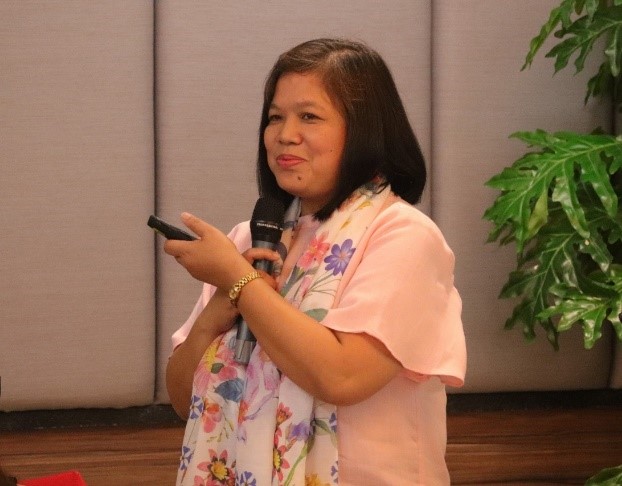
She aspires that the RTD serve as a venue where participants can share experiences, interventions, and best practices on biodiversity and infrastructure. Her message asked the participants to look into the the gaps and challenges and the corresponding capacity needs in connecting biodiversity and infrastructure. Lastly, AD Andres hoped that the RTD can identify the approach in how to mainstream biodiversity in the policies, plans, programs, and projects of relevant government agencies and organizations in the infrastructure sector in compliance to Section 40 of the 2018 General Appropriations Act.
Infrastructure, as defined by the CBD, refers to the physical structures and facilities that support the operations of society. Infrastructure can be classified into three types:
- Linear infrastructure – includes roads and highways, electrical power lines, canals, railways, and pipelines.
- Urban infrastructure – buildings and other structures usually found in or around cities.
- Coastal and marine infrastructure – includes a range of coastal, offshore, and subsea structures including ports and infrastructure for shipping and fisheries, residential and commercial developments, tourist resorts, offshore energy facilities, aquaculture installations, and electrical and communication cables.
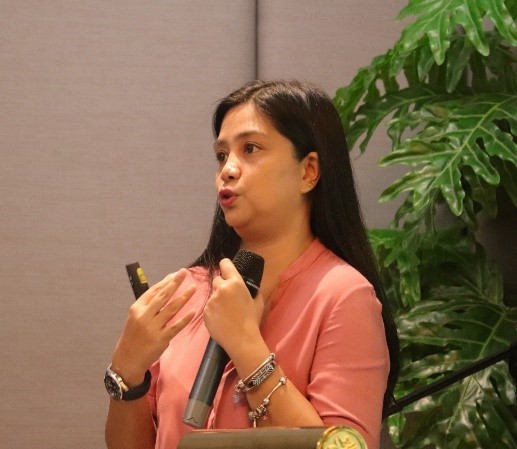
The first presenter was Engr. Regina Paula Eugenio of the Environmental Management Bureau. Engr. Eugenio presented the Environmental Impact Assessment (EIA) system and its relation to infrastructure development. She discussed the ins and outs of the EIA and the stages it goes through before giving the green light on a development project that may have adverse impacts on the local communities and environment. She mentioned that biodiversity is integrated into the EIA but admits that compliance among project proponents needs to be strengthened. Engr. Eugenio shares that the EIA is a decision-making tool that looks to balance environmental conservation and economic development.
Miss Lara Togonon-de Castro, En.P., president of the PIEP, presented next. She discussed the National Housing and Development Framework in the context of biodiversity conservation and sustainable use. Miss De Castro shared that currently, the NUDHF contains policy statements, strategies, and implementation measures intended to guide public and private sector efforts toward sustainable urban development and housing. However, the NUDHF is not yet adopted by local government units especially cities and municipalities that do not have a Comprehensive Land Use Plan (CLUP). According to her, biodiversity is an integral component of sustainable urban development but she acknowledges that there are challenges, namely:
- Lack of awareness on biodiversity values
- Translating strategies into specific actions
- Implementation at the local level
- Measurement of impacts of biodiversity interventions
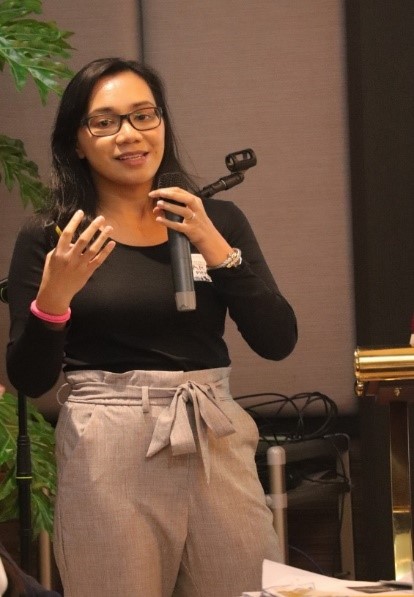
Although there are challenges, the future rollout of the NUDHF also presents opportunities for mainstreaming biodiversity. These include:
- Promotion of biodiversity in fora and orientations with provincial and regional land use commitees.
- Identification of responsibilities of respective government agencies in the implementation of biodiversity strategies during action planning workshops.
- Formulation of a communications plan and capacity development support of the HLURB to its field offices, partner agencies, and other stakeholders.
- Development of an urban biodiversity management database.
Strengthening of the policy development and land use planning group and updating of current policies and legislation.
Mr. Chester Dela Cruz of the PHILGBC was the third presenter of the day. Mr. Dela Cruz explained what makes a building green. He shared the criteria’s and processes that a building project undergoes to receive a BERDE
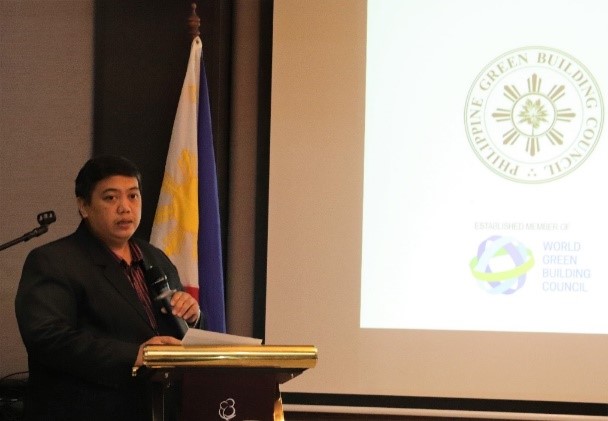
(Building for Ecologically Responsive Design Excellence) rating. He shares that green building technologies are in line with nine of the 17 UN Sustainable Development Goals (SDG). Mr. Dela Cruz claimed that construction of green buildings can improve biodiversity, save water resources, and help protect forests. He also showed pictures of buildings within Metro Manila that have been BERDE certified among which is the Laguna Lake Development Authority in Taguig City – one of the attached agencies of the DENR and the first certified government building. For details of the quality assurance tools to assess a structure, visit http://berdeonline.org.
After the lunch break, Prof. Susan Aquino-Ong Ph.D., member of PALA, opened the afternoon session with a presentation on Biodiversity-friendly and Sustainable Infrastructure Design. Before her presentation, Dr. Ong invited everyone to stand up and recite with her the Pledge of the Eco-Warriors for Biodiversity.
Together with Miss Christel Hannah Cruz, also a PALA member, they explained what landscape architecture is all about and shared best practices of landscape architecture in the Philippines particularly the UP New Clark City Campus Master Plan.
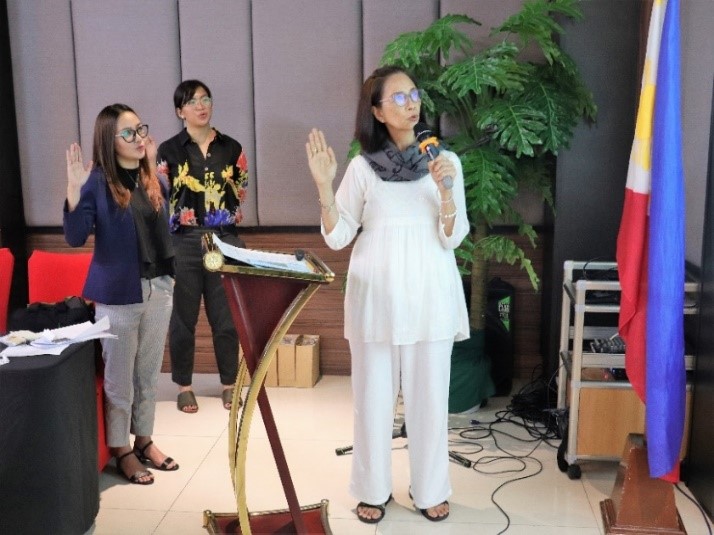
Engr. Mary Cris Samson-Utod of the DPWH followed with an Overview on the Past and Current Initiatives of DPWH on Infrastructure and its Linkage to Biodiversity. The DPWH mandate is to undertake the planning, design, construction, and maintenance of infrastructures such as national roads and bridges, flood systems, water resources projects, and other public works. These examples of linear infrastructure are intended to improve the economic and soclal welfare of the people.
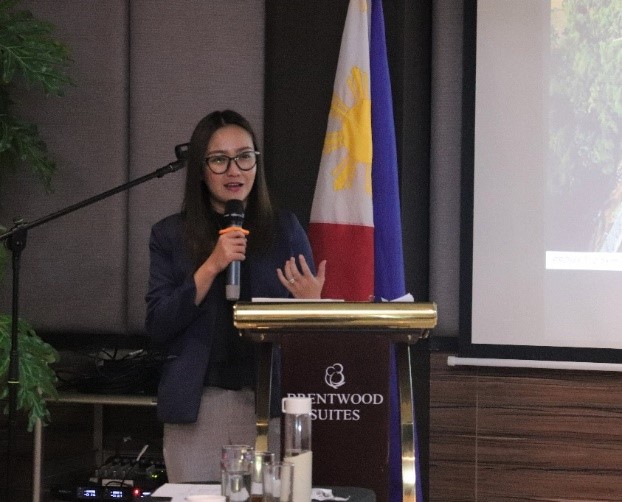
Engr. Samson-Utod stated that linear infrastructures bring people and people bring development. Thus, linear infrastructures are considered as agents of change. However, she admits that infrastructure projects have great implications to our environment. For all the positive impacts brought by linear infrastructure, these may also have significant negative effects on nearby communities and natural environment.
Currently, PREVENTION AND MITIGATION s are the two approaches that the DPWH adheres with to integrate the conservation and sustainable use of biodiversity.
Prevention involves:
- Identification of sensitive natural environments so that alternate routes and design of new roads may be considered.
- Road development should be located more than one kilometer away from sensitive areas whenever possible.
- Water crossing should be minimized and buffer zones should be established between roads and watercourses.
- Groundwater recharge areas should be avoided and major roads should not be contructed through national parks and protected areas unless approved by the DENR.
Mitigation measures may include:
- Reengineering of road cross-section design – examples include roads with narrower widths or lower vertical alignments.
- Incorporating climate change in DPWH Design Guidelines, Criteria, and Standards – design of the structure is upgraded to make it “climate change proof”.
- Planting in road right-of-ways and adjacent areas can help to support local flora and fauna. Aside from these two approaches, Engr. Samson also enumerated many DPWH environmental policy initiatives such electricity and water conservation measures, waste management and air pollution prevention programs, and green procurement standards.
Mr. Enrique Nuñez, Conservation International – Philippines Executive Director was the last presenter. His topic was about Climate Change Adaptation and Building Resilience thru Nature-Based Solutions – Green-Gray Infrastructures. He emphasized that the Philippines, being a tropical archipelago, is highly vulnerable to the effects of climate change. Typhoon Haiyan (Yolanda) serves as a reminder of the huge devastation and destruction the Philippines faced because of climate change. Conservation International aims to minimize the observed and projected impacts of climate change through ecosystem-based adaptation or EBA. EBA is defined by the Convention on Biological Diversity as the use of biodiveristy and ecosystem services as part of an overall adaptation strategy to help people adapt to the adverse effects of climate change.
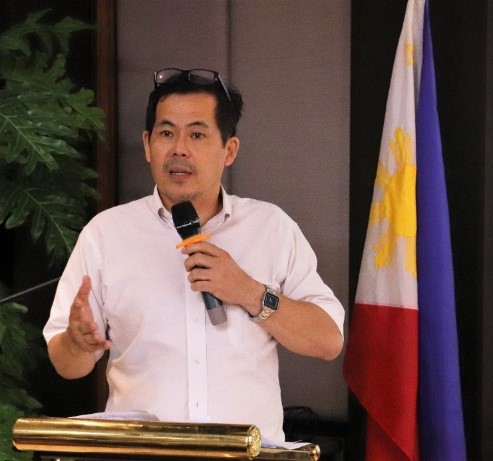
Green-Gray infrastructures are an example of EBA. It combines conservation and restoration of natural ‘green’ ecosystems with traditional ‘gray’ engineering techniques – such as levees or breakwaters – to shield vulnerable communities from the impacts of climate change. Mr. Nuñez enumerated the benefits we can get from Green-Grey Infrastructures like maximizing ecosystem benefits, coastal protection, water security, flood management, improving water quality, providing supplemental livelihoods, and carbon sequestration.
Mr. Nuñez identified three components to increase resilience of communities and ecosystems:
- Develop and implement green-gray solutions
- Support policy and institutional mechanisms
- Improve and diversify livelihoods
The Green-Gray Infrastructure projects of CI are presently concentrated in the central Philippines but he hopes to replicate it in other provinces. Applications of green-gray infrastructure include:
- Horizontal levees
- Breakwaters
- River restoration for flood management
- Water quality wetlands
- Infiltration and treatment-based landscapes
- Rainwater harvesting for water security
During the open forum, it was agreed that the different government agencies and partner organizations will continue working together to mainstream biodiversity in the infrastructure sector. Miss Maria Beatriz Quintos from the Public-Private Partnership Center thanked the BMB for inviting them to the RTD. She expressed interest to know more about the impacts of linear infrastructures to biodiversity because they are looking to mainstream various concerns in their projects. Dr. Susan Aquino-Ong also expressed her appreciation for the RTD since they were able to share landscape architecture to non-practitioners.
For. Nancy Corpuz, OIC Biodiversity Policy and Knowledge Management Division – BMB, gave the closing remarks. She called for all participants to continue working together towards biodiversity conservation in the infrastructure sector. She emphasized that the best way forward is through mainstreaming and integrating biodiversity into existing and planned programs and projects combined with the strong collaboration and partnership with other stakeholders.
